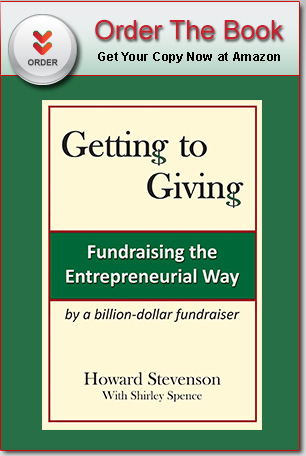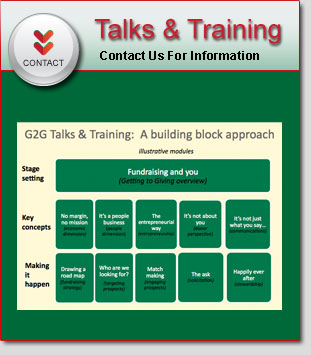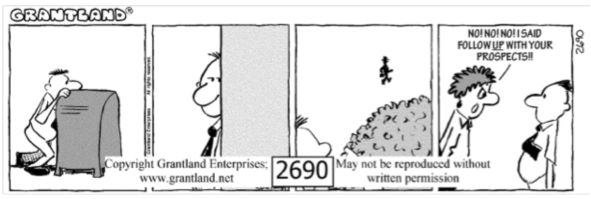I was talking with a colleague recently, about fundraising. We shared a few jokes we’d heard, like “performing cashectomies” and “extracting cash without anesthesia.” But mostly we talked – with pride – about what was being accomplished through the funds we had raised, and the many opportunities still out there. We also commiserated about the over-simplification of fundraising by many fundraisers.
One traditional approach is what I call sausage making; if you follow these steps exactly, using these tools and methods, you will get these results. It’s a numbers game. The danger here is getting trapped in rigid procedures and routines. A certain amount of entrepreneurial spirit is required, in any activity. A big factor in HBS Capital Campaign success was our team’s ability to come up with intelligent answer for all obstacles, and constantly change methods to address prospects’ different wants and needs. (I confess that one of my favorite questions was: “Why do it that way?”) You’ll end up leaving a lot of money on the table with a “grind it out” plus it reduces staff to crank-turners.
The gift pyramid is part of this approach. It reflects wealth distribution, and assumes giving at all levels, with 80 to 90 percent of all funds received coming from the top of the pyramid. It is the outcome of what could be described as a funnel strategy; pour a lot in, and a few good ones will come out. I have no issue with gift pyramids per se, just with their single-minded use. If you do use a pyramid, its shape should reflect your fundraising strategy (and not the other way around!); it’s an outcome, not a method. For example, some causes don’t have a broad appeal, so there’s little point to looking at the bottom of the pyramid. (I call that the elephant strategy.) Sometimes you want everyone – especially board members – to give at least something. (That would be a participative strategy.) Or you may combine the two; maximize ongoing participation, and go elephant hunting for large projects.
There’s another traditional fundraising approach that I call the lamprey eel method; “I’ll attach myself to you until you give.” Who can argue with the importance of building and maintaining relationships with people supportive of your cause? But, taken in isolation or to extremes, the strategy is flawed. One risk is “friend raising” instead of fundraising. Yes, I have made some good friends through my philanthropic work, but that is a pleasant by-product of partnering for a cause.
Another risk is that the donor becomes attached to a specific individual at an institution. What happens if that person leaves the organization? That is one reason why HBS’ development office makes a point of introducing donors to several staff members, and stressing that they are all there to serve. A similar problem sometimes arises with charismatic leaders of organizations, especially founders. People become more committed to the person than the cause or the overall organization, which can pose problems down the road.
All that said, I do think there’s a “secret formula” that underlies all fundraising, both good and bad. It’s just plain algebra, really. Assume a blank slate. Simply stated, if you multiply number of donors by closing percentage and average gift size, you arrive at a total-dollars-raised estimate. And each of the variables in the formula is actually a point of leverage. Part of the power and value of this approach lies in its implications for both fundraising effectiveness and efficiency. For example, if you increase your average gift and/or improve your closing rate, you can reduce the number of donors needed, and still hit your fundraising goal. Because you are dealing with fewer donors, you will need fewer staff for all the behind-the-scenes work, and you can lighten the load on your volunteers.
By improving on any of these measures, you can positively affect your total dollars raised. And you can get better, as you go. You can use the formula to test actionable options, based on the best available information at any point in time—i.e., making educated guesses to start, and introducing refinements as you go along.
What is your organization’s approach to fundraising?




